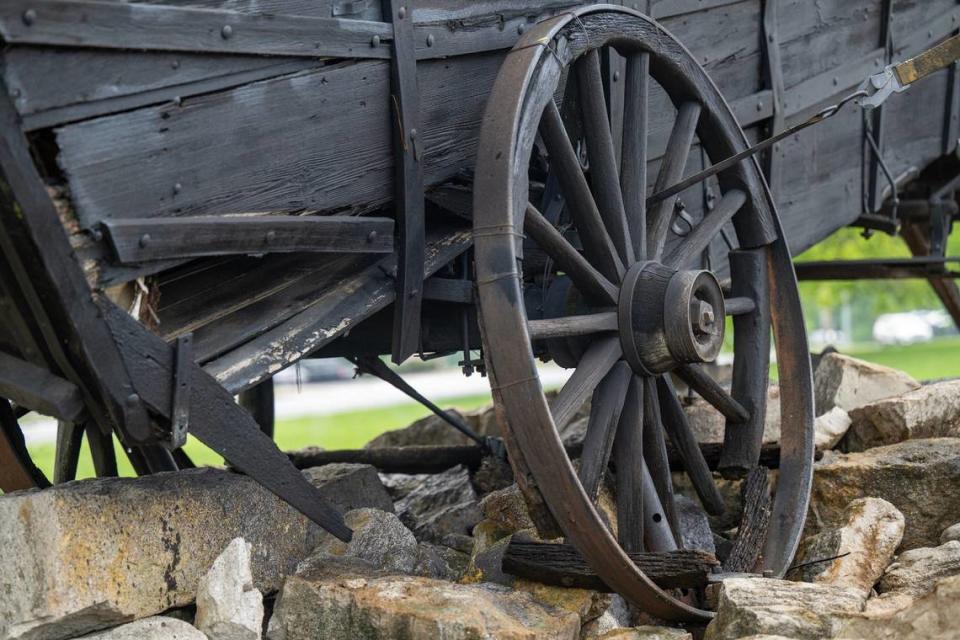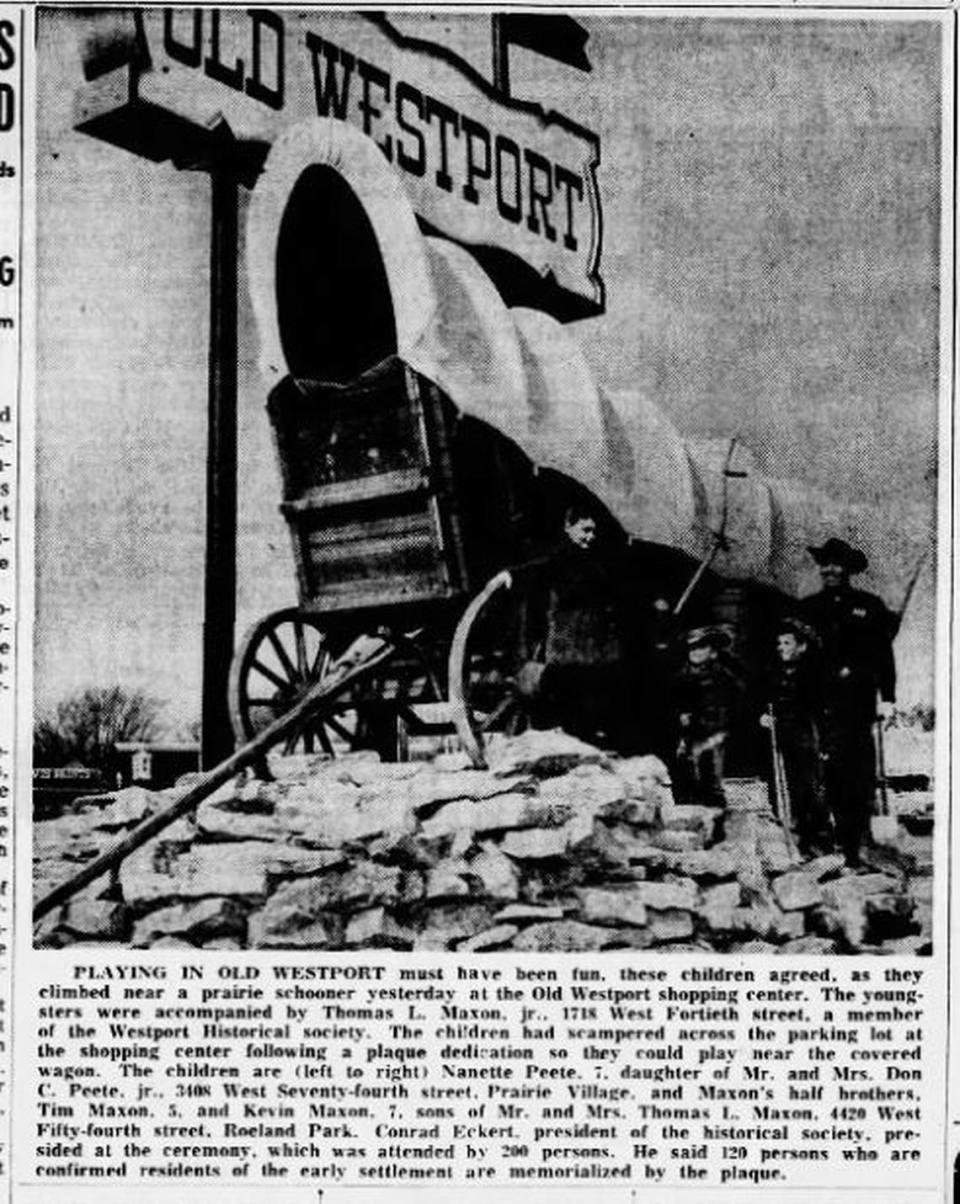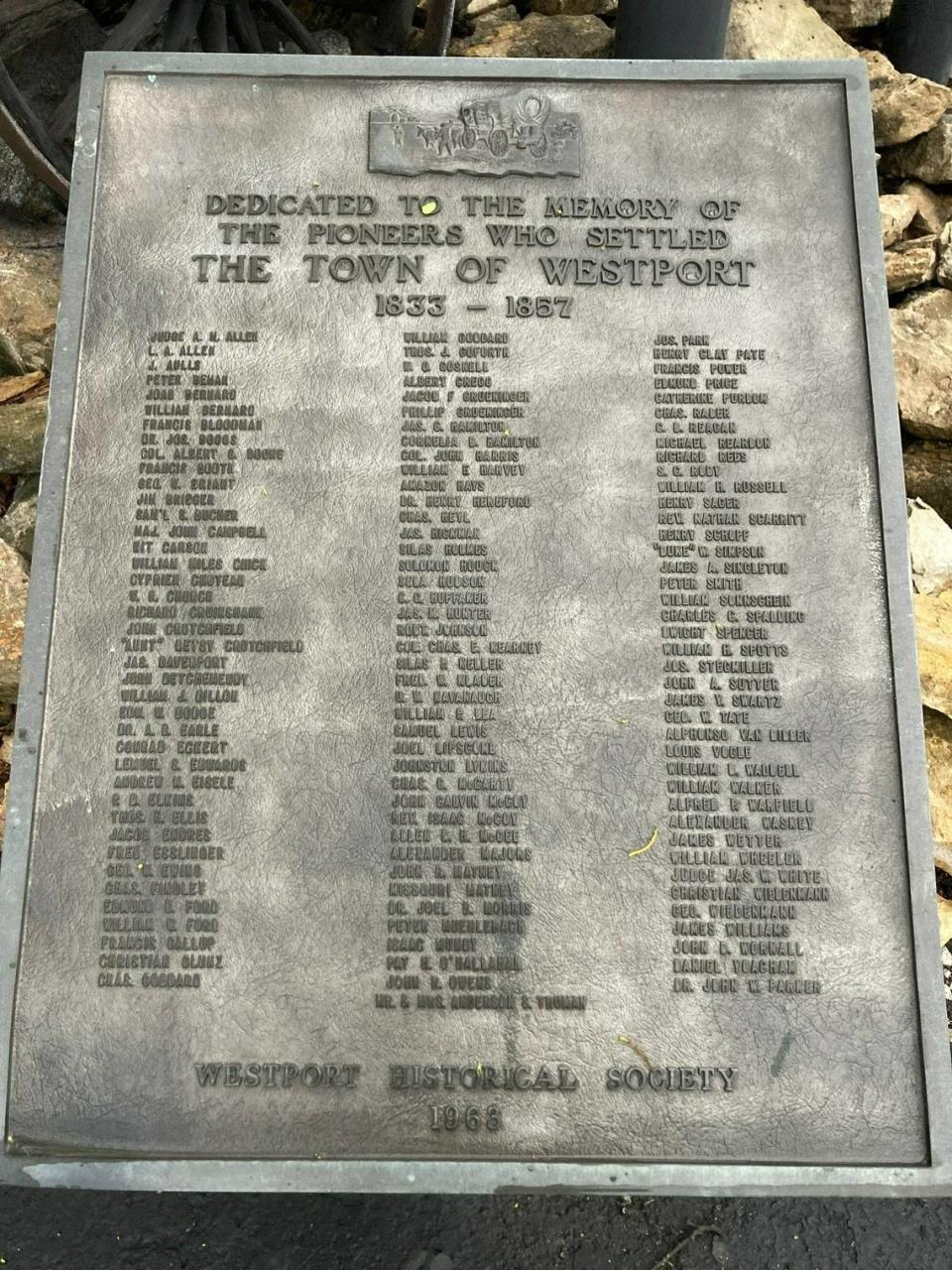For 6 decades, a covered wagon stood at this Kansas City corner. It’s getting replaced
Uniquely KC is a Star series exploring what makes Kansas City special. From our award-winning barbecue to rich Midwestern history, we’re exploring why KC is the “Paris of the Plains.”
A piece of Kansas City history and symbol of America’s westward expansion, the covered wagon that has stood for 61 years at the Old Westport Shopping Center at Westport Road and Southwest Trafficway will be removed on Wednesday morning.
The Conestoga-type wagon is from pioneer days (an axle dates to the 1860s), but its canvas is too worn. Its wood boards have been replaced many times. It has become far too deteriorated to remain, said Cooper Weeks, the shopping center’s owner since 1982.
But understanding the wagon’s significance to Kansas City and Westport — a provisions stop for the Santa Fe, California and Oregon trails — Weeks also plans to immediately replace the wagon Wednesday morning with a replica, built nearly 50 years ago for the United States bicentennial. Shipped in from South Dakota, it has been sitting in storage in Kansas City.
“We tried to preserve it — until today,” Weeks said of the historic wagon. “… Forty years ago, when I bought the center, nobody had ever taken care of the wagon with preservatives. So it is in bad shape. It’s falling down.”

Weeks said they have worked hard over the last five years to keep the wagon intact. The wagon is scheduled to be removed starting at about 8 a.m.
“We’re going to swap it out,” he said. “As soon as the old one is moved out of the way, they are going to move the new one back on the rocks and bolt it down.”
Covered wagons and wagon trains are a lasting symbol of America’s expansion west from the 1820s through the 1860s, along the Santa Fe, California and Oregon Trails, all of which started in Independence. Like that city, Westport — before it became part of Kansas City — was a major mercantile center, where settlers stocked up on supplies before their journeys.
The Santa Fe Trail Center Museum and Library in Larned, Kansas, the National Oregon Trail Interpretative Center, the Bureau of Land Management, and The National California Trail Interpretative Center speak of the multitude of wagons settlers used. A Conestoga wagon is a prime feature of the National Frontier Trails Museum in Independence. Wagons ranged in variety from “prairie schooners” to lighter paneled Dearborn wagons to the heavy Conestogas shipped in from Pennsylvania, with many imitators.

It was commerce that brought the wagon to the shopping center. The Star on May 14, 1961, announced that a new Western and pioneer-style center, designed by the firm Folger & Pearson, was to go up at the northwest corner of Westport Road and Southwest Trafficway. It was built on 5.65 acres that included the site of the St. Pius X school. A depiction of the covered wagon appears on an architectural rendering.
A Kroger supermarket held its ribbon cutting there in January 1963. The shopping center celebrated its grand opening for three days, Feb. 28 through March 2. It included square dancing with wagons and sleighs. An a cappella choir from Westport High School performed. Native American students from what was then called Haskell Institute in Lawrence were invited to perform in native dress.

That Saturday, the Westport Historical Society dedicated a bronze plaque at the foot of the wagon to “The Memory of the Pioneers Who Settled the Town of Westport” between 1833 and 1857. Among the familiar names are Westport founder John C. McCoy, John A. Wornall and Pony Express founders Alexander Majors, William H. Russell and William B. Waddell.
Notable: Of the 120 names inscribed, only one obliquely refers to a woman among the pioneers in the form of Mr. and Mrs. Anderson S. Truman, a nod to the grandparents of former president Harry S. Truman of Independence.
“It’s an icon of Westport,” Weeks said of the wagon. “It’s always been there.”


